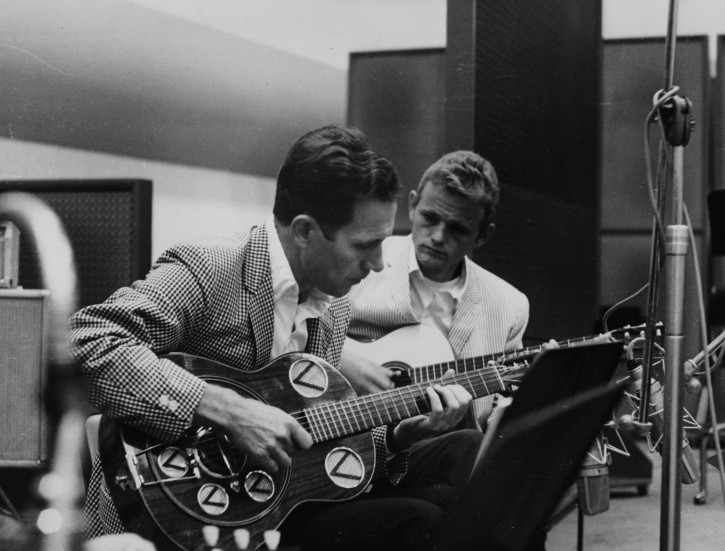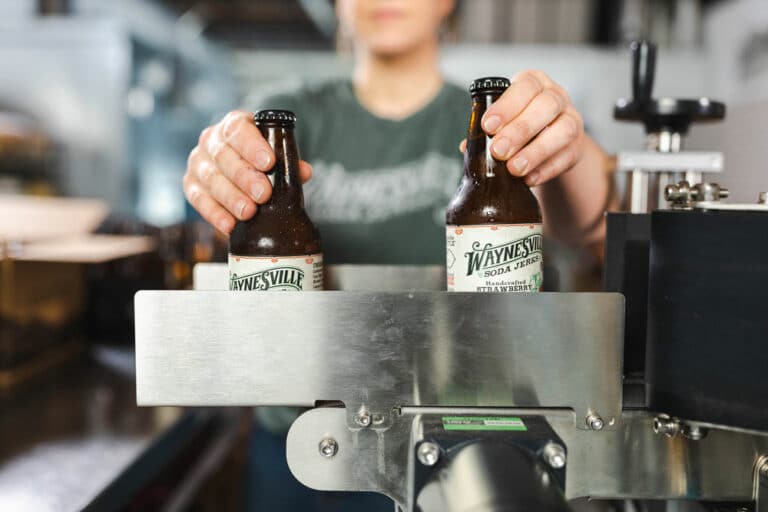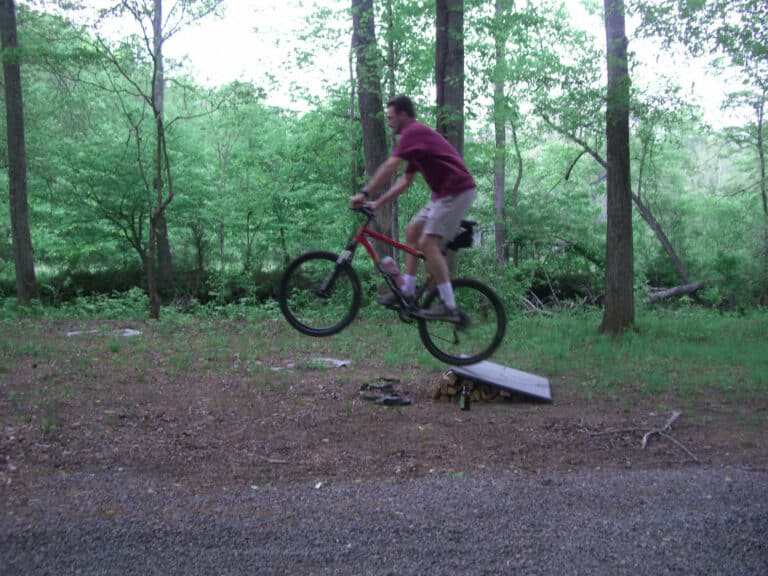Chet Atkins and Jerry Reed, two Nashville Cats, doing a little session work in the mid-1960s.
You know their work — signature guitar licks, drum rolls, or bass lines on countless platinum selling records — but you might not know their names.
Known collectively as The Nashville Cats, a cohort of session players — musical hired guns, if you will — appeared on virtually every great record to come out of Nashville as, by the mid-1960s, the Music City established itself as the center of the country music world. These pickers might have toiled in anonymity, their efforts and names lost to history, if Bob Dylan hadn’t come to town.
Dylan, arguably the greatest folk rock musician in history, came to Nashville to record his seminal Blonde on Blonde in 1966. Why Nashville? Well, because of The Nashville Cats, of course. Dylan, to everyone’s benefit, employed these phenomenal players during the recording session for Blonde on Blonde (and, later, two more recordings) and achieved what many believe is his best work.
And the rest of the music world paid attention.
Soon after, other iconic musicians from outside the country music sphere came calling. Joan Baez, Paul McCartney, Leonard Cohen, and Neil Young, among others, all made trips to Nashville and the Nashville Cats made appearances on their recordings as well.
At the same time, Johnny Cash began bringing these same folk rock stars onto his burgeoning television show, shot at the Ryman Auditorium, at the time the home of the Grand Ole Opry and country music’s most hallowed stage.
As these musical worlds mingled, the sounds of Nashville changed and paved the way for the musical melting pot Nashville is today.
Opening next week at the Country Music Hall of Fame Museum in Nashville is Dylan, Cash, and The Nashville Cats, an exhibit showcasing this cadre of unsung heroes who were instrumental in creating a sound, and a scene, in Nashville through the middle of the 20th century.
Featuring the artwork of artist Jon Langford and countless period artifacts, the exhibit highlights the sights and sounds of a musical era that turned Music City – and, by extension, the rest of the American music scene – on its head.
Michael Gray, exhibit curator at the Country Music Hall of Fame Museum, and Pete Finney, guest curator, were gracious enough to spend some time discussing the new exhibit.
BRO – Would Nashville be Nashville without the Nashville Cats?
CMHOF – It would certainly be a very different Nashville. The city has long been defined for many but is music. The “Nashville Cats” – a catch phrase used for the city’s pool of talented sessions musicians – are most responsible for creating the sounds that define Music City. Country music is a big part of that mix, of course, but pop, rock, folk, and even jazz have long been featured in music that comes from the city.
BRO – In the history of modern music, how seismic an event was Bob Dylan coming to town to record Blonde on Blonde?
CMHOF – Aside from the fact that Blonde on Blonde is widely considered to be among thebest albums by one of the most important figures in the rock era, it was the “big bang” for the massive influx of Dylan’s rock and folk peers that this exhibit explores. It was the musical brilliance of the Nashville players on that album that made Dylan return to the city to record, and it was Dylan’s massive influence on his peers that made so many important artists come here in the years to follow. In turn, the music made here during that period has influenced countless other artists, up to the present day. These are all themes explored in depth in the exhibit.
BRO – Other than the items on display in the exhibit, what else might museum visitors expect to see?
CMHOF – The late 1960s and early 1970s are known for being a very colorful time, with an adventurousness in art and design that frequently mirrored the often uninhibited music of the era. The art work, photographs, and vintage advertisements in the exhibit capture much about the cultural elements and fashions of the decade, as well as the music. The exhibit also includes an overlay of wonderful film clips, many of which are very rare.
BRO – How did you get Jon Langford involved?
CMHOF – Jon Langford was one of several artists considered to do the main art work for the exhibit. He has an extremely bold and distinctive style and a long immersion in the music of Bob Dylan and Johnny Cash. Langford is known for his powerful portraits of country and rock icons, including Dylan, Cash, Hank Williams, and Elvis Presley. Also a founding member of the influential punk band The Melons and hard-country rockers The Waco Brothers, Jon brings a punk rock instinct and singular artistic eye to a painting style that demands engagement. Langford’s attraction to country music stems from a love of story telling, from the music’s simple roots, and from country’s parallels to the punk aesthetic – often simple in form, with content focused no working men and women living in the real world.
BRO – If you opened this exhibit again in 2064, who are some of the contemporary Nashville Cats that might be showcased?
CMHOF – There are so many great musicians here, and the recording scene has become more diverse than ever, so it’s hard to pick just a few. But certainly Michael Rhodes, Paul Franklin, Stuart Duncan, and John Hobbs are among those who have earned a spot, with many years of playing with a wide range of artists and an incredible diversity in styles.
BRO – Is there any one particular item in the exhibit that gets your heart pumping?
CMHOF – Norbert Putnam’s Fender Precision Bass has such an incredible history, and with its classic design and weathered look, it wears that history like a badge of honor. It was used on thousands of recording sessions, with everyone from Elvis Presley, The Monkees, Linda Ronstadt, Chet Atkins, and Jerry Reed.
Dylan, Cash, and The Nashville Cats opens at the Country Music Hall of Fame Museum in Nashville on Friday, March 27th. The exhibit, along with its accompanying activities, will run for two years. For more information about the exhibit, hours of operation, and other cool things going on at the museum, please check out the Country Music Hall of Fame Museum’s website.








